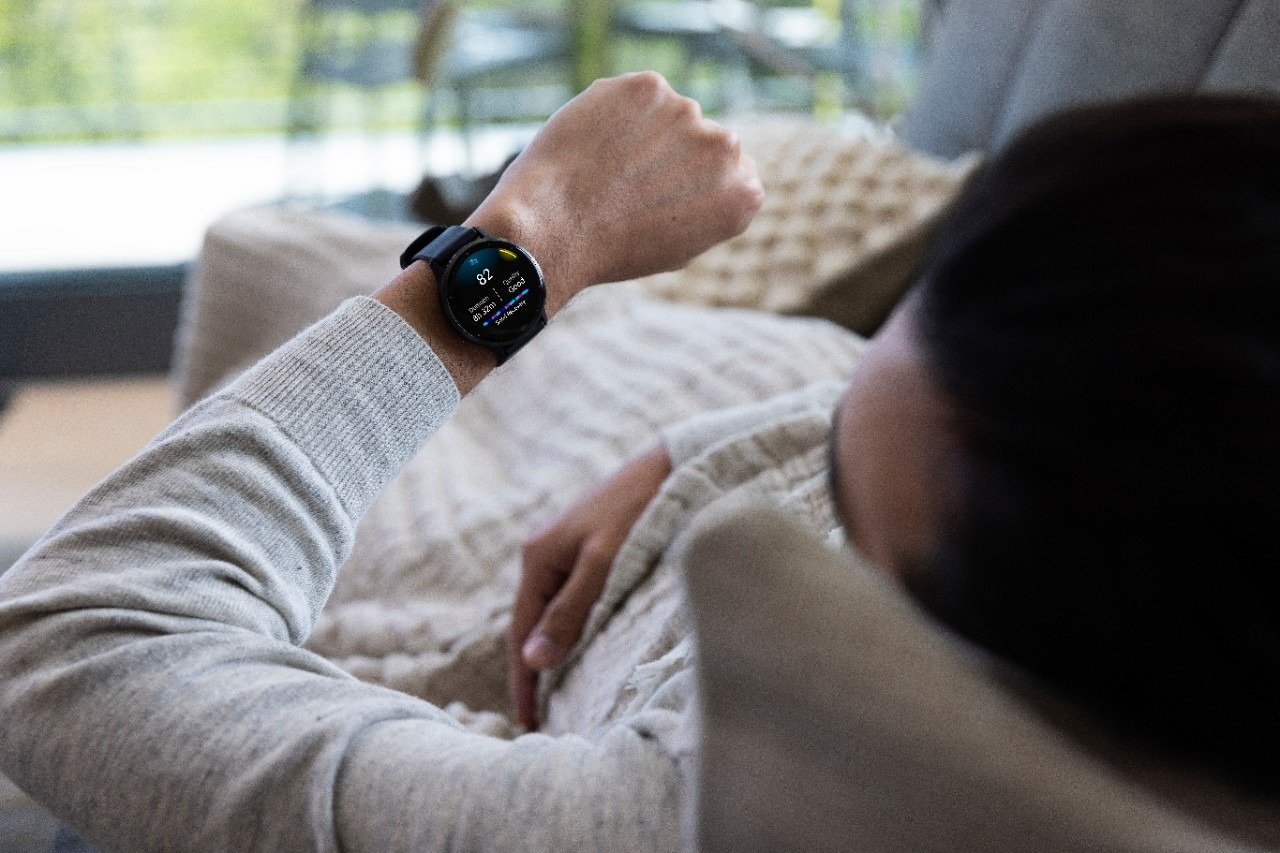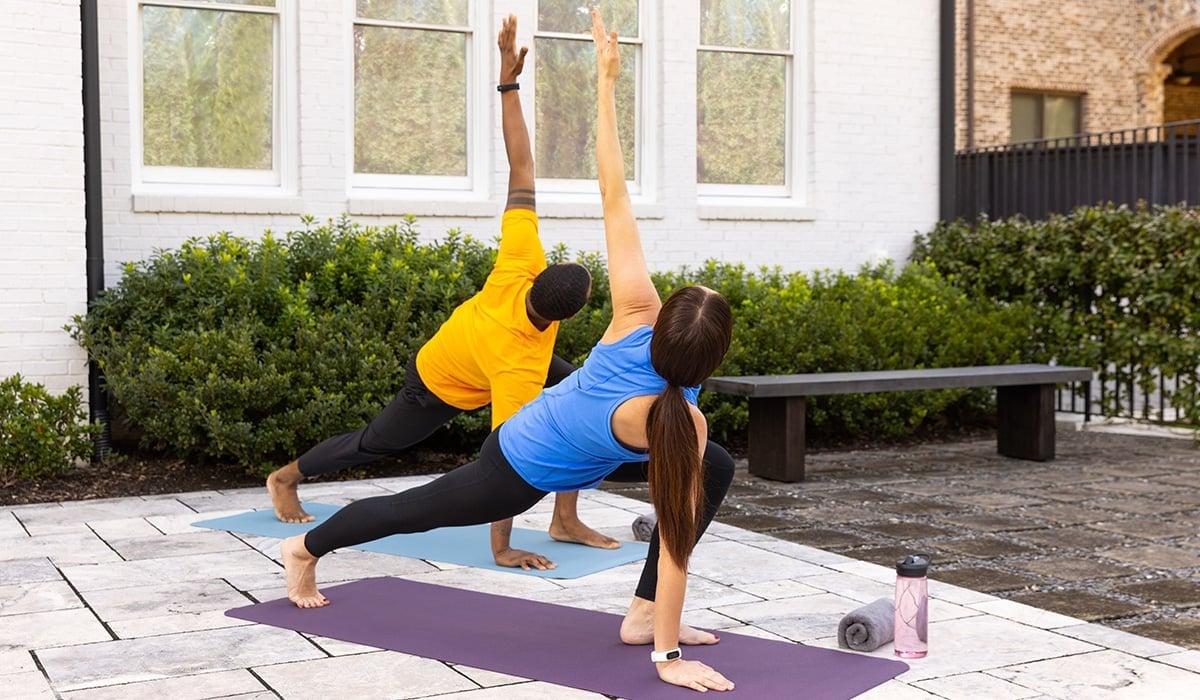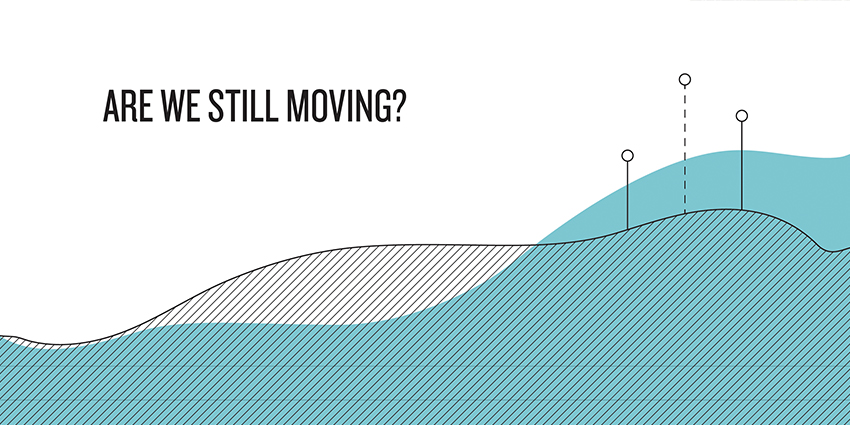
The Effect of the Global Pandemic on Active Lifestyles in the US
In the middle of March, Friday the 13th to be exact, Americans awoke to the news that a national state of emergency had been declared. By Sunday the CDC issued an advisory against gatherings of 50 or more people. According to activity tracking data from the millions of registered Garmin users, this fateful weekend in mid-March was a turning point, marking a major shift in human activity.
With state and local governments issuing shelter-in-place orders, it’s no surprise that Garmin data points to a massive decline in the overall number of steps taken during the second two weeks of March. This is an obvious cause-and-effect scenario and consistent with our global trend data in China, Italy and other countries where the pandemic struck first.
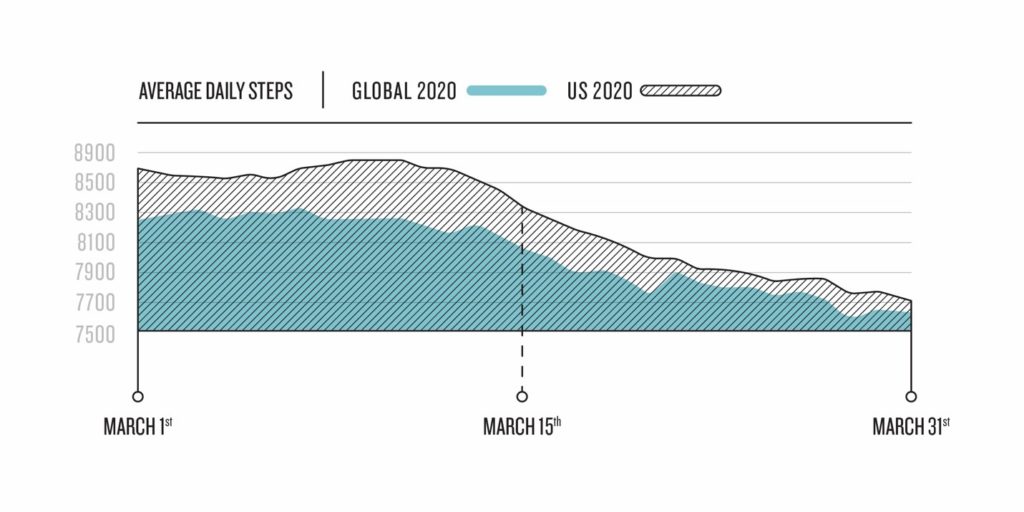
While the decrease in global movement scratches the surface of what’s happening, the advanced metrics in millions of Garmin wearable devices give us a deeper understanding of exactly how people are dealing with the impact of the pandemic on their active lifestyles. We’re observing a remarkable shift in the types of activities with which people are doing, reflecting an unprecedented about-face when it comes to typical springtime exercise and activity.
To paint a clear picture of the initial trends, Garmin engineers and data analysts looked at the percent change in activity level in the United States for specific sports and exercises and compared the first half of March with the second half of March to determine increases and decreases. For further clarity, the results are baselined against the same time period in 2019.
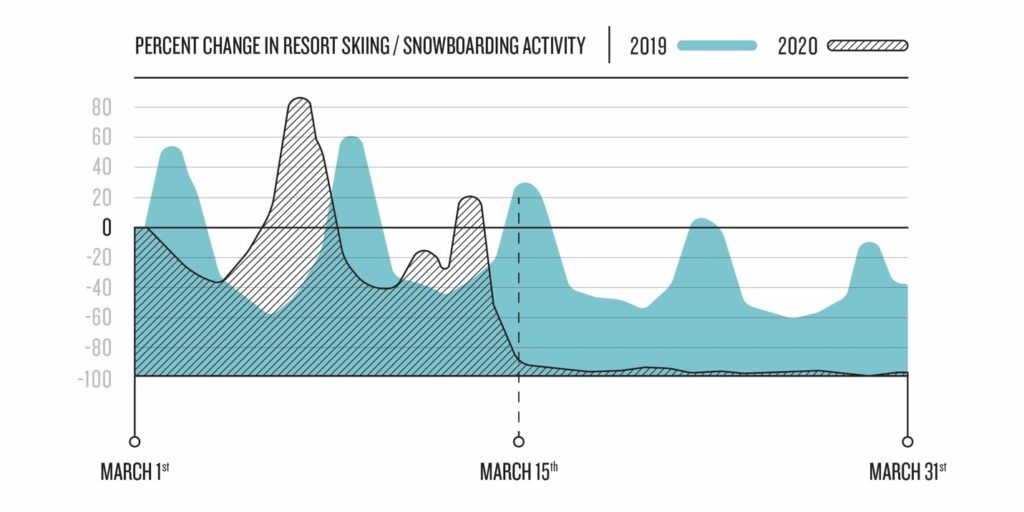
In the world of winter sports, resort skiing and snowboarding is down an eye-popping 96%, as the typical spikes in weekend activity suddenly disappeared. This falls in line with real-world observations, as popular destinations in Colorado and Utah seemingly closed overnight, forcing many to abandon their spring break plans.
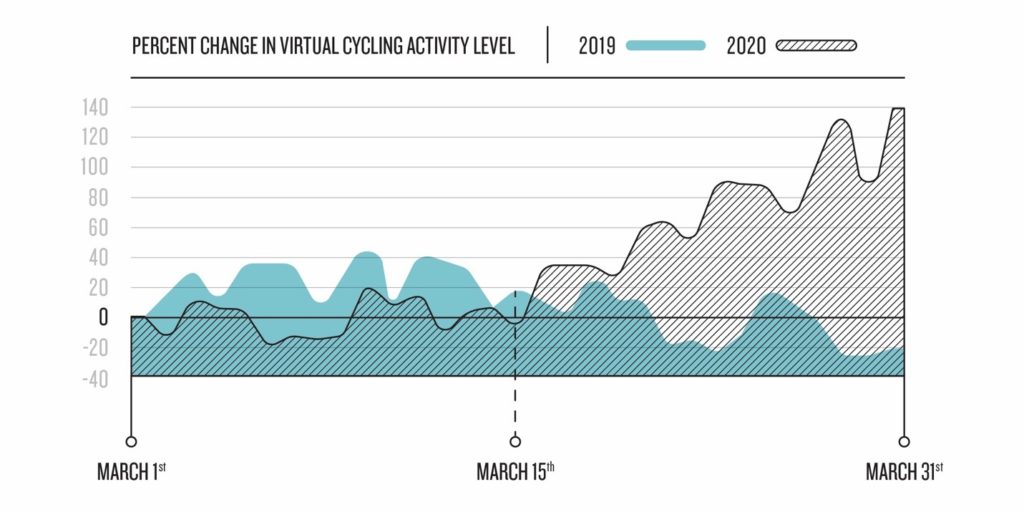
While skiers have stayed off the mountain, cyclists have evidently back-pedaled into their pain caves to continue routines. Virtual cycling activity is up an incredible 64% in the second half of the month, an aggressive shift that appears even more atypical when comparing it to the same time period last year. March 2019 saw a 20% decline in the activity as cyclists naturally began to take their rides outside to enjoy the warmer weather.
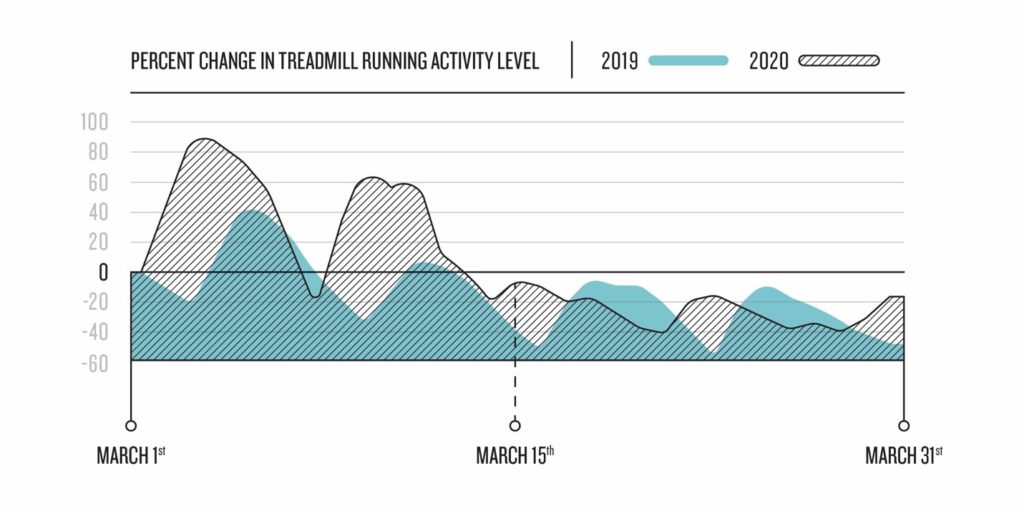
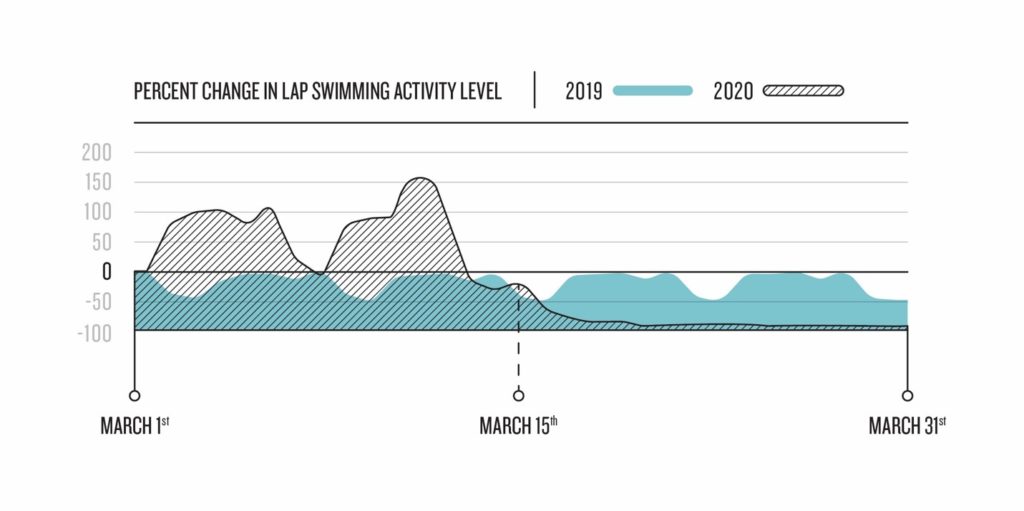
Things get even more interesting when we move outside of niche sports and consider the everyday fitness-seekers who’ve been forced to rethink daily workout routines. Indoor/treadmill running and lap swimming are down 44% and 88%, respectively. On the surface, that sounds like we’ve grinded to a halt. However, the full story points to the exact opposite. Remember, big box gyms across the country closed, which is a massive number of treadmills still sitting idle at the moment. If we look at virtual running (performed on a treadmill by linking your smartwatch to an outside app such as Zwift) we see a steep increase in the second half of March. And despite gym closures, overall indoor cardio is holding strong over 2019 levels and showing an 18% week-over-week increase from March 16 to March 30. This all seems to suggest one thing:
More people are exercising. And they’re finding new ways to do it from home, with and without their own equipment.
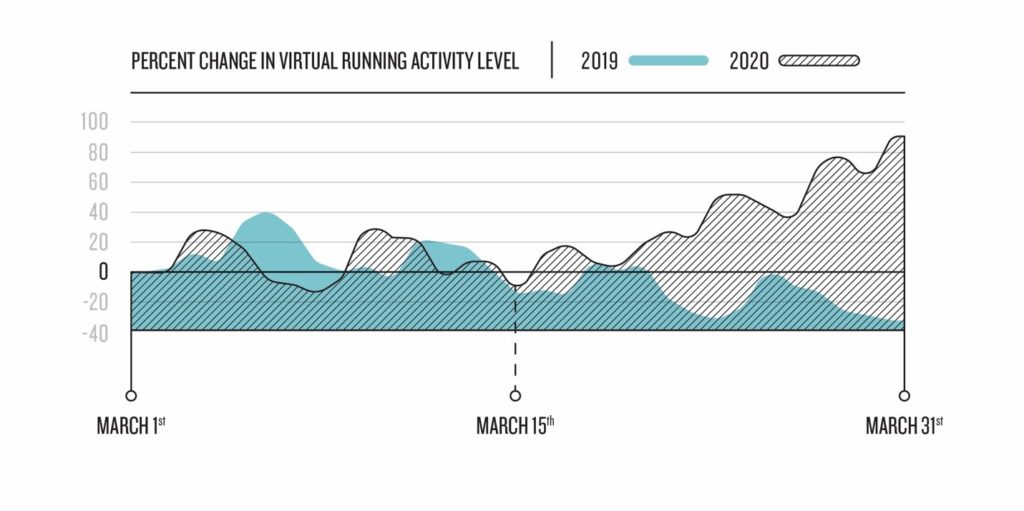
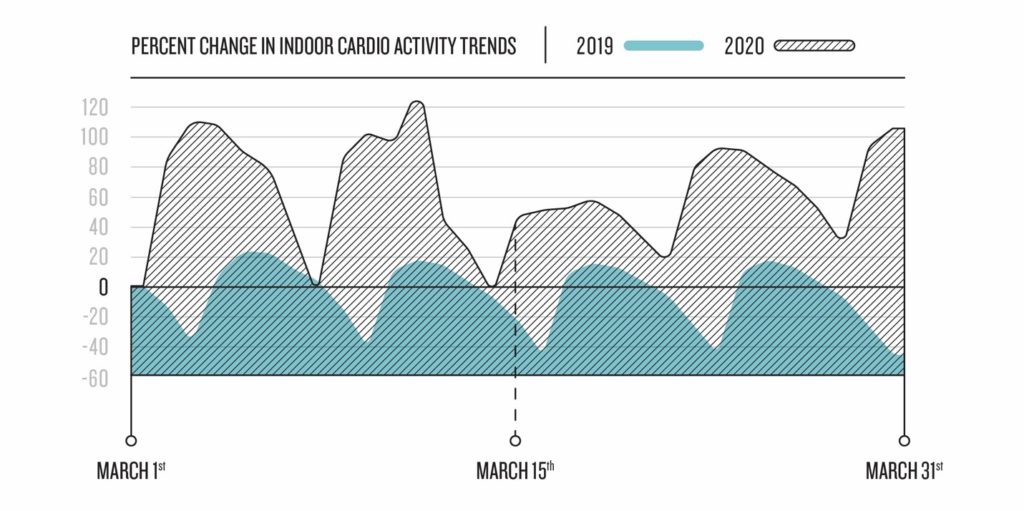
This theory is supported by media reports of stores selling out of in-home workout equipment, as people look to bring the gym to them. Furthermore, walking as a logged activity profile (this is a built-in app in Garmin devices) is up 36% when comparing the front half of March to the back half of March. This surge is double the 18% increase observed over the same springtime period last year. The numbers validate what most are observing in their own neighbors – lots of people are walking. Complying with social distancing recommendations to be sure, but walking, nonetheless.
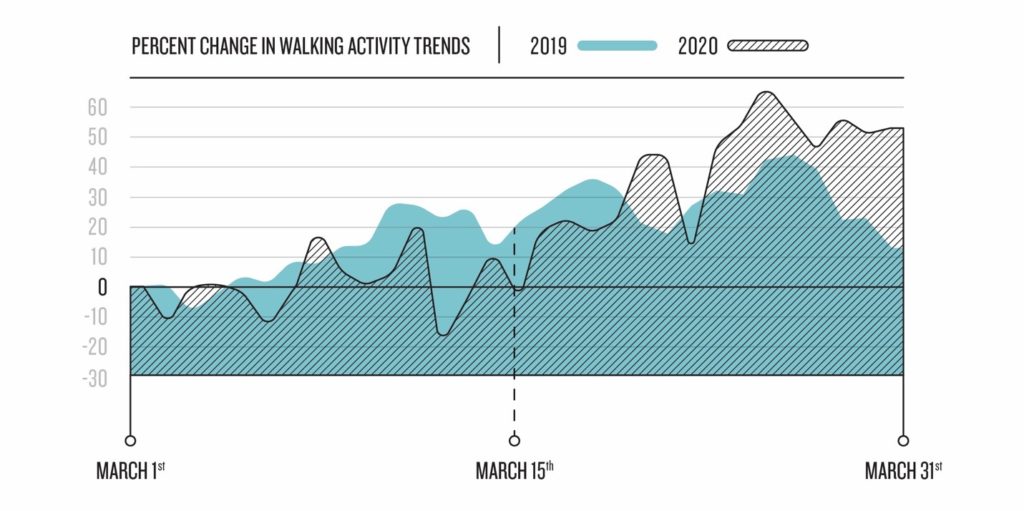
All of this reflects another important real-world observation we’re seeing on social media. In-home routines are being reinvented and shared virtually. Fitness retailers and personal trainers are offering remote workout solutions. Consumers are challenging each other to continue moving. Even Garmin started a #10KADAY step challenge on Instagram to help followers stay active while shelter-in-place orders are in effect.
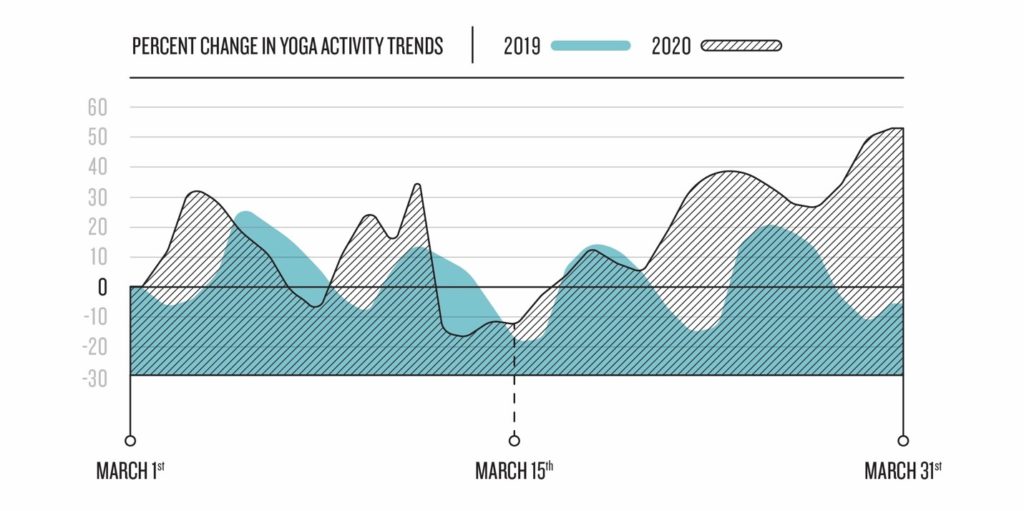
Offering further reassurance on the dual physical and emotional health front is the positive trendline for yoga. Garmin wearable device data shows an 11% increase, when comparing the front and back halves of the month, in the ancient practice of harmonising the mind and body through stretches and poses. Again, another significant increase over 2019 data. Whether the mats are being rolled out on the living room floor or on front lawns, it’s clear that yoga is becoming an activity of choice in a world that’s also being turned on its head, so to speak.
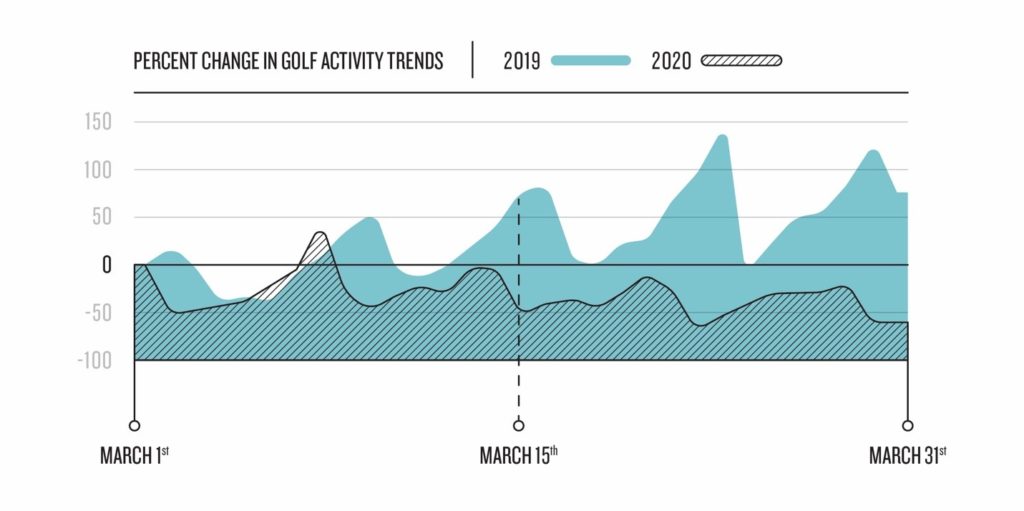
Golf is perhaps another activity that has been relegated to front-lawn practice swings. While many courses have remained open, the early data shows a 20% decline in the activity for the second half of the month. When comparing the same two time periods last year, golfing activity increased by 53%, as is common during the springtime.
So, what can we deduce from these early trends? In many respects, it comes down to a matter of interpretation. While the data is in the form of hard numbers, it’s important to note that any takeaways presented here are a subjective analysis based on our observances of real-world events and our insights as experts in the category. In summary, it’s too soon to draw final conclusions, at least with absolute certainty.
Garmin engineers and analysts will continue to monitor the data and provide updates for the benefit of customers and the public at-large. Future numbers for the month of April will reflect the impact of the full 30-day stay-at-home period and offer an even more detailed look at the effect of the global pandemic on our active lifestyles. Be sure to check back.



